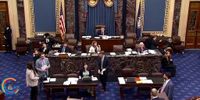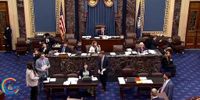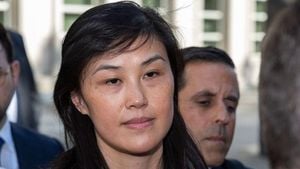As the United States government shutdown stretched into its sixth day on October 6, 2025, frustration and uncertainty gripped the nation. According to a Harvard CAPS/Harris poll released that Monday, a staggering 70 percent of Americans opposed the ongoing shutdown, with just 30 percent expressing support. The same poll revealed that 53 percent of respondents blamed Republicans for the impasse, while 47 percent pointed fingers at Democrats. Despite the blame game, most Americans—65 percent—believed Democrats should accept a continuing resolution at current spending levels, while 35 percent favored holding out for additional funding for the Affordable Care Act (ACA).
The roots of the stalemate were tangled in a familiar Washington dispute: health care. Congressional Republicans, led by President Donald Trump, demanded a "clean" spending bill to fund the government through November 21, 2025. Democrats, on the other hand, insisted on an extension of ACA subsidies as a condition for keeping the government funded through October 31. The House had already passed the GOP-backed legislation, but it repeatedly failed in the Senate, where three Democrats had previously crossed party lines to support the measure—highlighting early divisions within the Democratic ranks.
With negotiations stalled, the effects of the shutdown rippled across the country. Approximately 2 million federal workers had their pay suspended, and about 750,000 were furloughed following the October 1 funding lapse, as reported by USA TODAY. Essential employees, including troops and air traffic controllers, continued to work without pay, keeping critical services afloat. However, the strain was beginning to show. Transportation Secretary Sean Duffy warned at a press conference that some air traffic control facilities were experiencing an uptick in sick calls, with up to 50 percent of employees absent on certain days. This, he cautioned, could lead to flight delays and cancellations if the shutdown persisted.
The economic consequences were already being felt. The Congressional Research Service estimated that the previous partial shutdown in 2018-2019 had cost the U.S. economy $3 billion in real GDP. Consumer spending dipped, private sector profits took a hit, and the release of key economic data, such as the September jobs report, was delayed. Bankrate Senior Economic Analyst Mark Hamrick commented, "This fresh gap in knowledge is significant at a time when clarity matters most."
Political leaders on both sides dug in their heels, exchanging blame in public forums. South Dakota Republican Senator and Majority Leader John Thune declared on the Senate floor, "Mr. President, we’re now in day six of the Democrats government shutdown. Day six – and I’m wondering what exactly Democrats think they’re gaining from all this. Mr. President, Democrats own this." Not to be outdone, New York Democratic Minority Leader Senator Chuck Schumer fired back, "Senate Democrats returned to Washington ready to negotiate, we were ready to work with Republicans to reopen the government and end the healthcare crisis, but it takes two sides to have a negotiation. This shutdown is all on Donald Trump’s shoulders."
President Trump, meanwhile, made it clear he was not interested in negotiating a deal to reopen the government. White House Press Secretary Karoline Leavitt stated, "His position is very clear. There’s nothing to negotiate. Just reopen the government. And then we can talk about all the important issues facing our country." She added that the President had not called specific members of Congress to negotiate. The White House continued to publicly blame Congressional Democrats for the shutdown, reiterating that a clean continuing resolution was the only path forward.
Behind the scenes, the standoff grew more contentious. The American Federation of Government Employees filed a lawsuit on October 3, alleging that the Trump administration had modified Education Department employees' out-of-office email messages without their consent to blame Senate Democrats for the shutdown. According to the complaint, employees who tried to revert their messages found them changed again to the partisan language. The union argued this violated the First Amendment and requested a court order to bar the administration from including political speech in federal employees' messages. Deputy Assistant Education Secretary for Communications Madi Biedermann defended the messaging, stating, "The email reminds those who reach out to Department of Education employees that we cannot respond because Senate Democrats are refusing to vote for a clean CR and fund the government. Where’s the lie?"
As the shutdown dragged on, the practical impacts deepened. Federal workers braced for missed paychecks, with civilian employees scheduled to receive their next payment on October 10 and military members on October 15. The National Credit Union Administration and various credit unions stepped up, offering short-term loans, fee waivers, and payment deferrals to help affected workers bridge the gap. Brett Noll, president and CEO of FedChoice credit union, remarked, "We have been through government shutdowns before and truly understand the financial challenges our members face. That’s why we, and many other credit unions, immediately activated support measures from day one of the shutdown."
Some government services remained operational, albeit with limitations. The Internal Revenue Service kept more than 74,000 employees on the job, and the Social Security Administration continued issuing retirement and disability benefits, though it furloughed 12 percent of its staff. Passport services also continued, but delays were expected if the shutdown persisted. The Department of Education maintained disbursement of Pell Grants and Federal Direct Student loans, but with most staff furloughed, borrowers faced longer wait times for assistance.
The cultural sector was not immune. The Smithsonian Institution announced it could keep its museums and zoo open only through Saturday, October 11, using leftover funds from the previous fiscal year. Beyond that, public access would be suspended if the shutdown continued.
Meanwhile, the shutdown's political theater played out in new and sometimes bizarre ways. The White House posted an AI-generated video of House Minority Leader Hakeem Jeffries wearing a sombrero, accompanied by a fake voiceover and mariachi music—a move Jeffries decried as "racist." Vice President JD Vance dismissed the criticism, saying, "I think it's funny, the president's joking. I'll tell Hakeem Jeffries right now. I make this solemn promise to you that if you help us reopen the government, the sombrero memes will stop."
Public approval of Congress continued to fall, with the Harvard CAPS/Harris poll registering just 32 percent approval—a five-point drop from the previous month. Mark Penn, chair of the Harris poll, summarized the mood: "The ratings for Congress dropped to new lows as voters are frustrated that rather than solutions to problems, Congress has shut down the government instead. There’s no clear direction at the minute on who it is helping or hurting except the entire system."
Despite the finger-pointing, the polls suggested the political fallout was far from settled. While more Americans blamed Republicans and President Trump for the shutdown, a surprising 62 percent believed Republicans would ultimately "win" the standoff, compared to 38 percent for Democrats. Yet, only 23 percent said the GOP’s position was worth shutting down the government, and just 28 percent supported the Democrats’ demands as justification.
With the Senate set to vote yet again and the House not scheduled to return until October 14, the prospect of an immediate resolution looked dim. As federal employees, businesses, and ordinary Americans waited for Washington to break the deadlock, the cost of inaction—both economic and human—continued to mount.





